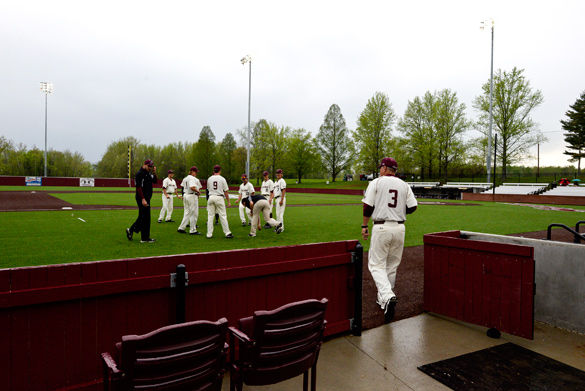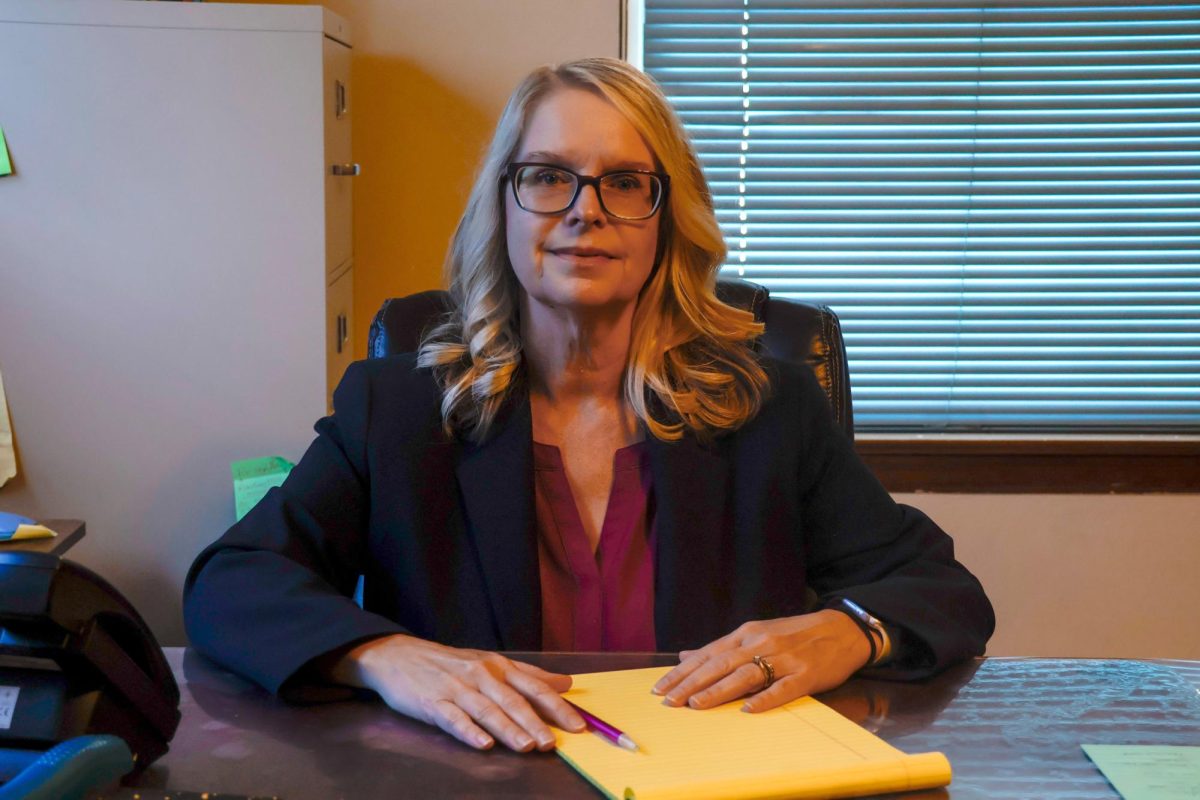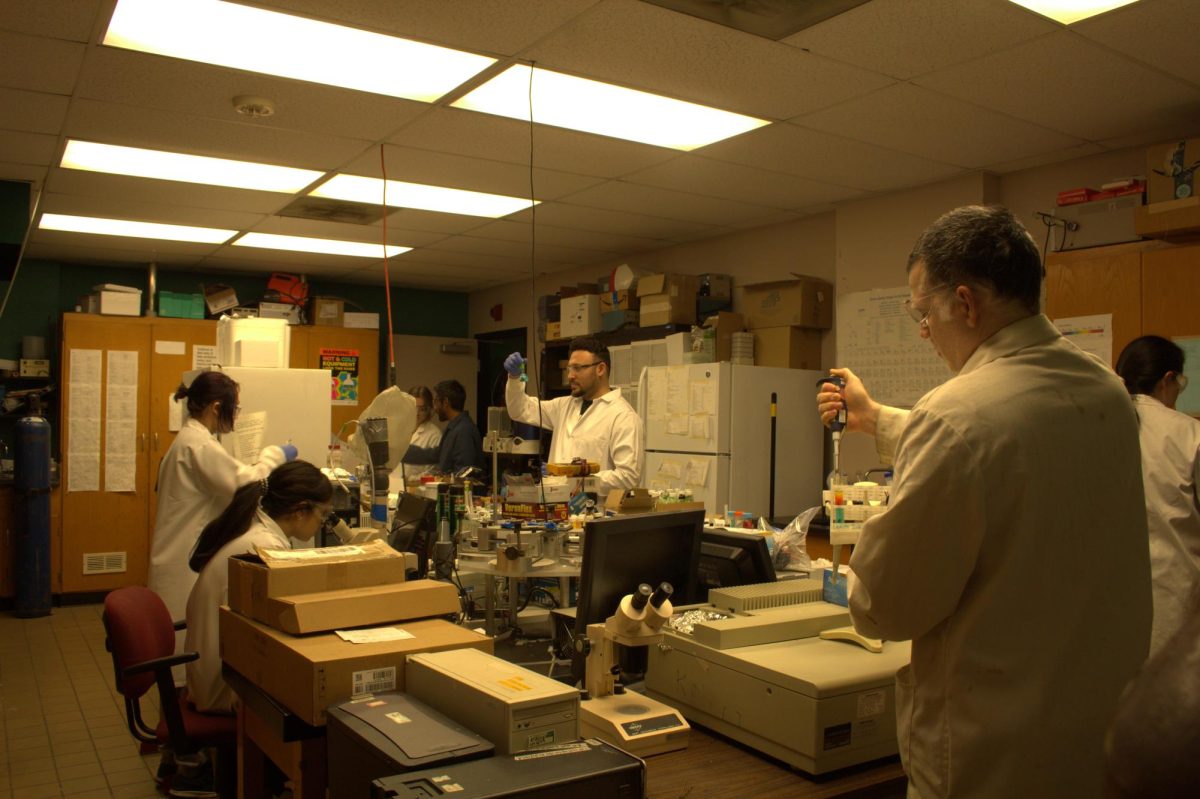Rain not a problem for Saluki baseball
April 22, 2015
An old poem about the Milwaukee Braves’ pitching staff was famously boiled down to “Spahn and Sain, then pray for rain,” in reference to the limited talent on the pitching staff beyond Johnny Sain and Hall of Famer Warren Spahn.
With two pitchers done for the season and three others having missed time this season, the SIU baseball team might welcome a rainout or two. However, the Astroturf of Abe Martin Field at Itchy Jones Stadium would need to see a flood of near-biblical proportions before becoming unplayable.
The artificial turf, installed as part of the facility’s $4.2 million renovation before the 2014 baseball season, can take up to eight inches of rain per hour and still drain enough to host baseball.
Advertisement
Astroturf has come a long way since the opening of the Houston Astrodome in 1965. What started out as plastic green carpet that could exist as indoor grass now performs outside as well as or better than the real thing.
When water hits the field, it drips through the rubber pellets and sand infill underneath the blades of fake grass and into drains that empty beyond the outfield walls into a creek across the street 1,000 yards away.
That drainage ability has been on display in 2015, most notably on April 7, when a four-hour downpour still did not keep SIU and Belmont off the field.
SIU associate athletic director of facilities and game operations Andy Pettit said the Astroturf is far and away an improvement over the facility’s old grass field.
“To use a cliché, they’re not even in the same ballpark,” Pettit said. “We’ve played six or eight games this year that there’s no way we would have played two years ago.”
Itchy Jones Stadium sits on one of the lowest parts of campus. After the Lew Hartzog Track and Field Complex was built just east of the baseball field, water draining off the slightly higher infield combined with water draining off the newly-raised track turned the outfield into a swamp.
The 2013 renovation of the baseball facility turned out to be the remedy to the rain. Now, virtually the only thing stopping Saluki baseball is lightning. NCAA rules dictate that outdoor sports must halt play until 30 minutes after each lightning strike is seen.
Advertisement*
An April 3 thunderstorm caused that afternoon’s SIU vs. Central Arkansas game to be played as part of a doubleheader the next day, the only postponement of a home game this year.
Abe Martin Field can also withstand other elements. The college baseball season starts before snow is gone in most of the Midwest. But, with PVC pipe attached to the bottom of its snow blades to protect the plastic grass, the grounds crew can clear off the playing surface in time for a late-February contest.
The playing surface is Astroturf 3D Xtreme, a baseball-specific synthetic turf which Pettit said is the top artificial turf on the market. Rather than dirt, the base paths are made of Astroturf 3Di. Itchy Jones Stadium is the first in the United States to feature that type of surface.
The turf of the base paths is designed specifically for sliding. Visiting players can be seen testing their sliding abilities on the surface before game time.
Players must be sure to have pants on before sliding on the field, because sliding in shorts is akin to asking for turf burn. The plastic surface can easily rip a player’s skin off.
However, the Astroturf has made life easier on the players overall, even on off days. Players did most of the field maintenance on the old grass field. Since the renovation, the only part of the field that is not Astroturf is the dirt pitching mound.
{{tncms-asset app=”editorial” id=”2a05c80a-e947-11e4-aaae-a77f4fedcfa1″}}
Redshirt senior pitcher Bryce Sablotny, one of only five Salukis with the program before the installation of the new field, said he enjoys not having to play the part of groundskeeper as often.
“It’s really nice,” Sablotny said. “All we have to do is the mound and some of the bullpens, and that’s it. It’s awesome.”
One main drawback of an artificial turf is that it needs to be replaced about every 10 years. Petit said the field and drainage system cost roughly $1.2 million to install. The field surface would cost between $500,000 and $1 million to replace. If the surface becomes damaged, it would need to be replaced, as fixing it is virtually impossible.
SIU director of event operations Tad Dunn said this is a worthwhile investment even though baseball is not a revenue sport.
“You’ve always got to look at your investment in your student athletes,” Dunn said. “You can’t expect them to come here and not provide them with what you can best provide.”
Saluki coach Ken Henderson said the Astroturf field helps with recruiting. Of the 33 players on the Saluki roster, 28 have joined the program in the last two years.
“Kids want to play on it,” Henderson said. “It’s a huge help.”
Thomas Donley can be reached at [email protected] or at 536-3311 ext. 269.
Advertisement










